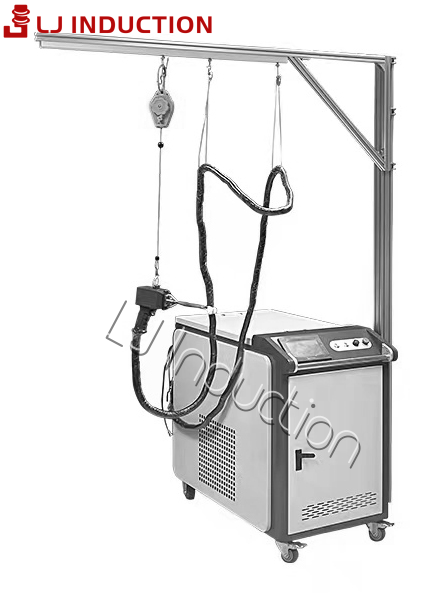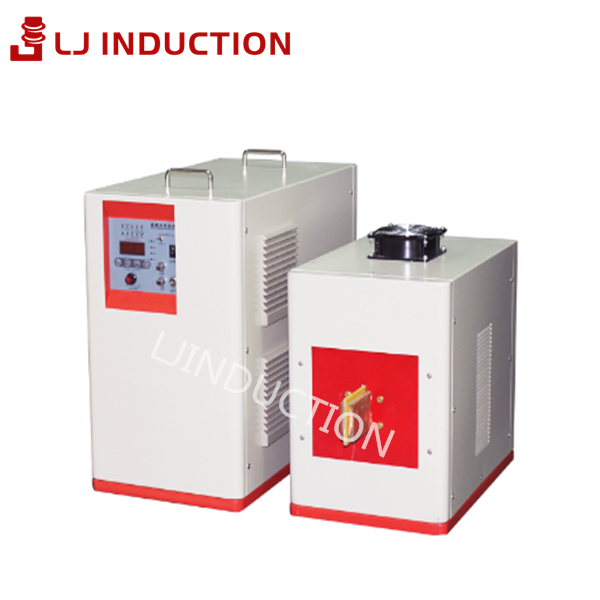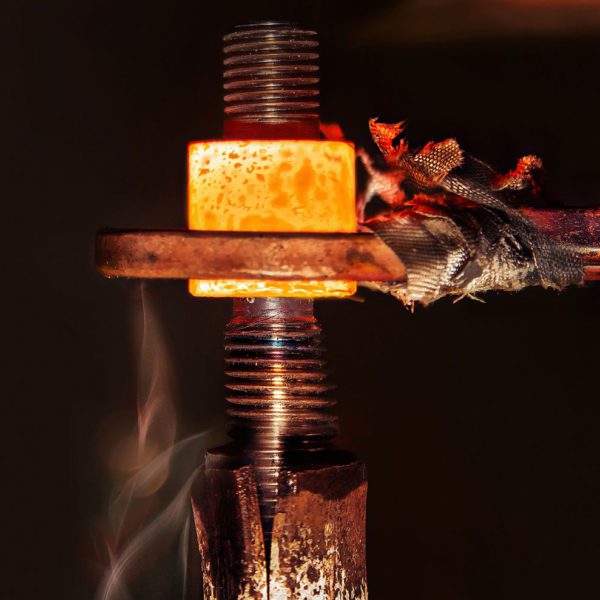What is induction brazing?
Induction brazing is a precise, flameless joining process that uses electromagnetic induction to heat metal components and melt a filler material—without melting the base materials. The process creates strong, clean, and repeatable joints in metals such as copper, brass, aluminum, and steel, making it ideal for high-precision industrial applications.
Induction brazing relies on an alternating current passing through an induction coil, which generates localized heat in the targeted area. As the filler metal melts and flows into the joint gap via capillary action, it creates a strong metallurgical bond upon cooling. Unlike welding, brazing works at lower temperatures and does not deform or weaken the base parts.
Induction brazing machines are widely used in industries such as HVAC, automotive, electronics, and aerospace—where consistent quality, repeatability, and speed are critical. These machines offer exceptional control over heating time, temperature, and joint integrity.
Induction brazing equipment varies in power, frequency, and coil design, and can be customized for different part sizes, joint geometries, and production volumes. From small-diameter copper pipes to complex steel assemblies, the process is highly adaptable.
At LJINDUCTION, we offer state-of-the-art induction brazing machines and equipment tailored to your production needs. Our systems are designed to deliver fast cycle times, minimal energy loss, and integration into automated workflows for mass production or precision small-batch manufacturing.
Benefits of Using Induction Brazing
Induction brazing offers significant advantages over traditional torch or furnace brazing methods, especially in terms of speed, consistency, and safety.
Induction brazing delivers rapid and localized heating, which reduces thermal stress on surrounding components. This is critical when working with heat-sensitive parts or dissimilar metals, helping preserve material integrity and surface finish.
Induction brazing equipment provides clean, oxidation-free joints thanks to its controlled heating environment. When used with proper flux or inert gas shielding, the process produces minimal post-braze cleaning requirements.
Induction brazing machine systems enable repeatable results with precise control over temperature and time. This consistency is especially important in automated production lines, where every joint must meet strict quality standards.
Induction brazing improves workplace safety by eliminating open flames and reducing operator skill dependency. This lowers training costs and enhances process reliability, especially in high-volume operations.
Induction brazing equipment is also energy-efficient, as it applies heat only where needed and for exactly as long as required—helping manufacturers reduce energy consumption and operational costs.
With LJINDUCTION’s advanced induction brazing technology, you gain access to a reliable, scalable, and clean brazing process that meets the demands of modern manufacturing—whether you’re joining copper tubing in HVAC units, attaching electrical connectors, or assembling fuel system components.
Examples

Brass Metal

Brass Metal

Brass Metal

Brass Metal

Brass Metal

Brass Metal

Brass Metal

Brass Metal

Brass Metal

Brass Metal

Brass Metal

Brass Metal
Popular Machine in Induction Brazing
Induction Heating for Welding Terminator Machine
High Frequency Induction Air Conditioner Parts Welding Machine
News about Induction Brazing
 Induction Heating Tech
Induction Heating Tech Understanding How Frequency Affects Induction Heating
Deprecated: preg_replace(): Passing null to parameter #3 ($subject) of type array|string is deprecated in /home/u872448966/domains/inductionheatmachine.com/public_html/wp-includes/kses.php on line 1805
What is induction heating?
Benefit of using induction heating
All LJinduction heating machine
Request Evaluation of your heating requirement
Request Info
About Company





